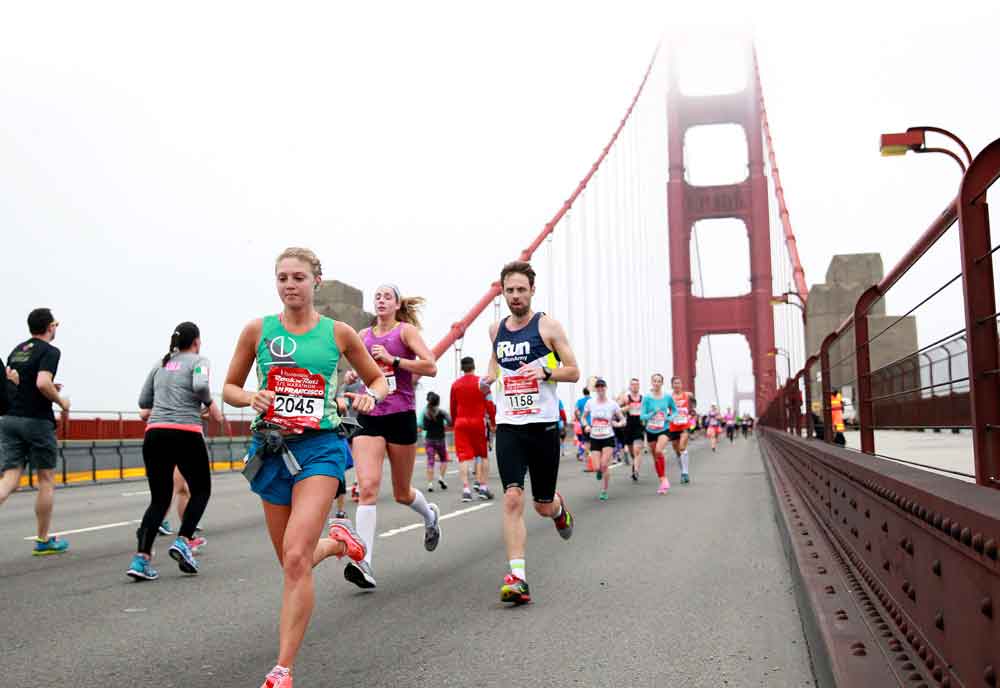Why Running Races Could Be Your Ticket to a Better Tri

How racing could make you a better racer.
One of the best ways to get fast and gauge race readiness is to get out and race. “If I told you to go out and run 6.2 miles as fast as you could, you’d hate me, but enter into a race, and it’s a fun way to build fitness,” says Coach Ryan Bolton, a 2000 U.S. Olympian in triathlon who now coaches elite runners, triathletes, and age groupers. “I almost have every athlete do a running race on the fast end of the season.” Here, Bolton explains the best ways to make a run race work for you.
Marathon
Why you should: “Running a marathon gives you a good idea of what the legs will feel like at the end of an Ironman without the same amount of damage,” Bolton says.
How to do it: “If you raced a marathon all-out, obviously it would hurt, but if you simply stuck to your Ironman pace, it shouldn’t take too much out of you.” He also adds that a marathon is good race- day simulation for checking nutrition, handling nerves, and uncovering unforeseen obstacles.
When you should: Bolton suggests doing a marathon in the early season while building a base, no closer than six weeks before a goal Ironman or 70.3.
Half Marathon
Why you should: “A standalone half marathon is fantastic because you can use it to build great fitness at a longer distance,” Bolton says. Fitness that’ll pay off at every distance tri from Olympic on up. “The half doesn’t beat you up nearly as much as a marathon, and you can bounce back quickly.”
How to do it: Race at full speed. Shorter-distance races are a better gauge of fitness (see below), but the benefits of a best-effort half marathon will pay off later.
When you should: “A half marathon could be done anywhere in the season, but not closer than three to four weeks out from your goal race.”
10K
Why you should: Bolton uses 10k races as a quality tempo session to build speed and endurance. “It goes both ways, a 10k is good for building fitness and is a perfect test of fitness for triathletes racing any distance,” Bolton says.
How to pace it: Run a 10k at your best 10K race pace, and use the result to see where your fitness is. “On it’s own, it’s an effective workout, but when used as a part of a brick, it’s even better,” he says. (See our sidebar for three creative workouts that include running races for any level.)
When you should: “Because a 10k has lots of benefits with very little detriment, you can pop a good one as close to two to three weeks before your goal race,” he says.
Extra Credit
Turn race day into a killer tri workout.
Beginner: Have your bike ready and waiting in the car. Cross the finish line of a half marathon or shorter, then take off on a race-day brick simulation by hopping on your bike and going right into 4 x (5 min. at 8/10 effort, 2 min rest), then a 20 min cool down.
Intermediate: Warm up running as10mineasy,5minat4/10,5 min 5/10, trying to hit the start line of a 10k or shorter event without stopping. After the race, keep running with5x(1minbuildto8/10,2min easy), then a 10 min cool down.
Advanced: Before the race—at a nearby pool or safe body of water— swim a 500 warm-up easy, then 4 x 200 at race pace with 20 sec rest. Quickly get to the start line of a half marathon or shorter, race, then finish with a 20-minute race pace effort on the bike. Cool down for 15 minutes afterwards, basking in the glow of your own broken mini-tri.